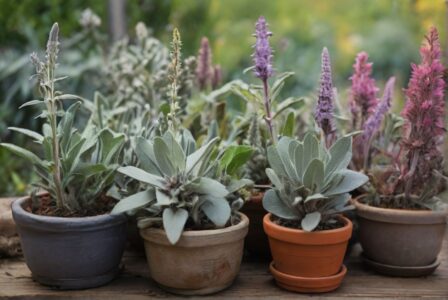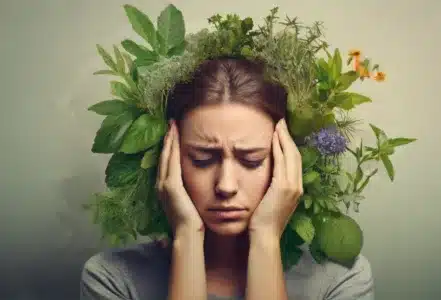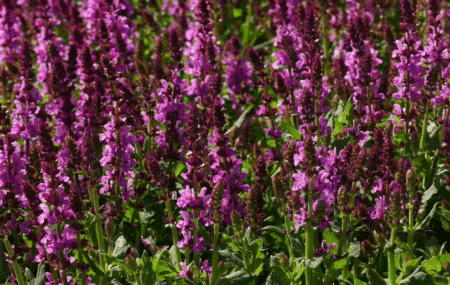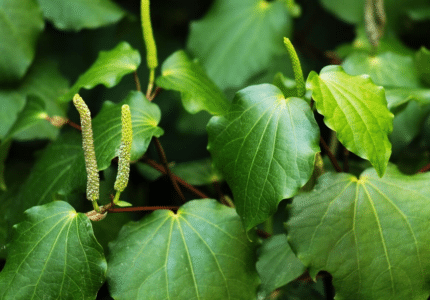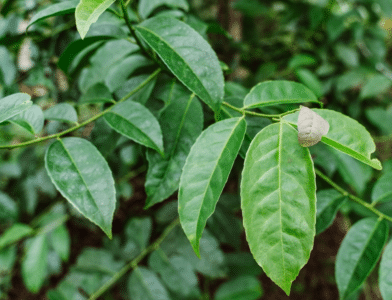- Introduction: The fascinating world of sea debris
- Characteristics and distribution of the sea rhubarb
- History of the use of ephedra in medicine
- The different types of ephedra
- The pharmacological effect of ephedra on the body
- Traditional uses of ephedra in different cultures
- Modern uses of ephedra in dietary supplements
- Risks and side effects of taking ephedra preparations
- Current legal situation and regulation surrounding the sale of products containing ephedrine.
- Conclusion: The potential of sea buckthorn - a versatile plant with a controversial past
You can find our ephedra seeds here!
Are you looking for information about the Meerträubel? Then you've come to the right place! In this blog post, you can find out everything you need to know about this fascinating plant, also known as ephedra distachya. Find out how to use sea buckthorn, what effects it has and where you can buy it. Immerse yourself in the world of sea buckthorn and be inspired by our videos. Take a look around our store and sign up for our newsletter so you don't miss any news. Join the sea rhubarb community and discover the many possibilities of this plant.
1. introduction: The fascinating world of sea debris
The fascinating world of ephedra takes us into an extraordinary plant world full of secrets and potential. In this blog article, we will take an in-depth look at ephedra, a plant genus that is also known as sea weed or jointfir. Ephedra has a long history of use in various cultures and is still widely used today due to its pharmacological effects. But before we delve deeper into the properties, uses and risks of ephedra, it is worth taking a look at the fascinating world of this plant. It belongs to the Ephedraceae family and is characterized by its unique appearance. With its thin stems and needle-shaped leaves, it is reminiscent of a mixture of a conifer and a grass. This unusual combination makes the sea dew plant a special phenomenon in the plant world and immediately arouses the interest of botanists and nature lovers alike. However, it is not only its appearance that is fascinating, but also its ability to adapt to extreme habitats such as desert regions or mountains. The seaweed has learned to survive under adverse conditions and produce valuable ingredients that can be used for medicinal purposes as well as for food supplements. In the following sections, we will take a closer look at the properties, uses and risks of ephedra and gain a comprehensive insight into the fascinating world of the sea holly.
2. properties and distribution of the sea rhubarb
Seaweed, also known as ephedra, is a fascinating plant with a variety of properties and a wide distribution. Its main characteristic is its high content of ephedrine, an alkaloid with a stimulating effect on the central nervous system. This substance has caused controversy in the past and has often been associated with other psychoactive plants such as cannabis. Seaweed grows mainly in arid regions and is particularly common in North America, Asia and Europe. The best known species is Distachya seaweed, also known as jointfir due to its resemblance to a joint. However, there are also other types of ephedra plants with different characteristics and uses. The use of ephedra has a long history in various cultures around the world. In traditional Chinese medicine, ephedra has been used for centuries to treat respiratory conditions and as an energy booster. Other cultures have also found various uses for this versatile plant. Nowadays, ephedra is mainly used in dietary supplements, as it is said to help with weight loss and improve athletic performance. However, caution should be exercised when taking ephedra supplements as they can cause side effects such as palpitations, high blood pressure and insomnia. In terms of the legal situation, the sale of products containing ephedrine is strictly regulated or even banned in many countries. It is important to be aware of the current laws and regulations before purchasing and using such products. To summarize, sea weed is a fascinating plant with a controversial past. Its versatile properties and prevalence make it an interesting topic for further research and discussion.
3. history of the use of ephedra in medicine
Ephedra is a plant that has been used in medicine for thousands of years. Its history of use in the treatment of various ailments is fascinating and goes back a long way. Even in ancient China, ephedra was used as a remedy to treat respiratory diseases and regulate blood pressure. The plant was also used in traditional medicine in other cultures such as ancient Egypt and the Native Americans. A special property of ephedra is the alkaloids it contains, in particular ephedrine, which has a stimulating effect on the body. This pharmacological effect made ephedra a popular ingredient in various preparations for weight loss or performance enhancement. However, there have also been controversial discussions about the use of ephedra due to potential risks and side effects. In particular, high doses or improper use can lead to cardiovascular problems. In many countries, legislation has therefore been passed to restrict or ban the sale of products containing ephedrine. Nevertheless, the potential of seaweed as a versatile plant with a controversial past remains. It is important that anyone interested in using ephedra thoroughly researches the potential risks and consults a doctor or pharmacist if in doubt. Ephedra should always be used with caution and with consideration of individual health needs. With its fascinating history of ephedra's use in medicine, the sea holly is an example of the many possible applications of this plant. It will be interesting to see how the legal situation and regulation surrounding the sale of products containing ephedrine will develop and what significance this plant will have in the future.
4. the different types of ephedra
Ephedra is a genus of plants that belongs to the family of the seaweed family. Within this genus, there are various species of ephedra that differ in their characteristics and distribution areas. One of these species is Ephedra distachya, also known as "Jointfir" or "Dioecious sea holly". This species is mainly found in Europe and North Africa and has a long history of use in medicine. Another well-known species is Ephedra sinica, which has pharmacological effects on the body due to its high ephedrine content. Other species such as Ephedra equisetina and Ephedra gerardiana are also of interest for their traditional use in various cultures. The diversity of ephedra species illustrates the potential of sea buckthorn as a versatile plant with a controversial past. In the following sections, we will take a closer look at the pharmacological effects of ephedra on the body as well as the traditional applications and modern uses of this fascinating plant. Stay tuned for more information on the topic!
5 The pharmacological effect of ephedra on the body
Ephedra, also known as sea weed or jointfir, is a fascinating plant with a long history in medicine. In this section, we will take a closer look at the pharmacological effects of ephedra on the body. Ephedra contains a number of active ingredients, including the stimulant alkaloid ephedrine. This alkaloid has a similar structure to adrenaline and can therefore produce various effects in the body. One of the main effects of ephedra is the stimulation of the central nervous system, which can lead to an increase in energy, concentration and performance. In addition, ephedra can also stimulate metabolism and suppress appetite, which has made it a popular ingredient in many diet supplements. However, caution is advised as there may also be risks associated with taking products containing ephedrine. It has been reported that high doses of ephedrine can cause cardiovascular problems and some countries have already restricted or banned the sale of such products. It is therefore important to inform yourself thoroughly about the correct dosage and possible side effects before use. Nevertheless, the pharmacological effect of ephedra on the body remains an interesting topic for further research and discussion.
6 Traditional uses of ephedra in different cultures
The traditional uses of ephedra in different cultures are a fascinating aspect that is closely linked to the seaweed. In many cultures, ephedra has been used for centuries for various medicinal purposes. One example of this is the use of ephedra distachya, a specific type of seaweed, in traditional Chinese medicine. There it is used to treat respiratory diseases such as asthma and bronchitis. Ephedra also played an important role in indigenous North American medicine, for example in the relief of headaches and rheumatism. In some cultures, ephedra was also used as a stimulant to increase stamina and energy. The Maori culture of New Zealand used certain types of ephedra plants during long treks or in battle. They appreciated the invigorating effect of the plant and relied on its restorative properties. It is interesting to note how the uses of ephedra can differ depending on the cultural background. While some cultures focused more on the medicinal aspects, others saw ephedra as a way to increase physical performance. The traditional uses of ephedra show the versatile potential of this plant and offer an insight into its long history as a remedy and stimulant in different cultures. In the next section, we will look at the modern uses of ephedra in dietary supplements and take a closer look at the potential risks and side effects.
7. modern uses of ephedra in dietary supplements
The modern use of ephedra in dietary supplements has become increasingly important in recent years. Ephedra, also known as sea weed or jointfir, is a versatile plant with a controversial past. In this blog article, we've already explored the fascinating world of sea weed and looked at its properties, distribution and the history of its use in medicine. Now we would like to take a look at the modern uses of ephedra. While it was long known primarily for its pharmacological effects, it is now increasingly being used as an ingredient in dietary supplements. These products promise various benefits such as weight loss and increased athletic performance. However, before deciding to take ephedra supplements, it is important to find out about the possible risks and side effects. For example, ephedrine, a component of ephedra, can affect the cardiovascular system and have undesirable effects.
Careful dosing and consultation with a doctor are therefore essential. The legal situation surrounding the sale of products containing ephedrine should also be taken into account. In some countries, such products are banned or subject to strict regulations. It is important to inform yourself about the applicable laws and regulations in order to avoid legal consequences. Overall, the modern use of ephedra in dietary supplements demonstrates the potential of this versatile plant. Nevertheless, it is crucial to proceed with caution and to be fully informed about possible risks and legal regulations. There is no doubt that ephedra has a fascinating past and offers interesting possibilities for the future, but its use requires precise knowledge and a sense of responsibility.
8 Risks and side effects of taking ephedra preparations
Taking ephedra supplements carries risks and side effects that should not be ignored. Although the seaweed is a fascinating plant with many uses, it is important to be aware of the potential dangers associated with the use of ephedra. Ephedra contains the active ingredient ephedrine, which can have a stimulating effect on the body. This can lead to increased blood pressure, palpitations and insomnia. There is also a risk of overdose, especially if ephedra preparations are taken in combination with other stimulants. This can cause serious health problems and should therefore be avoided. It is advisable to consult a doctor before taking ephedra preparations and to follow the dosage recommendations exactly. It should also be noted that some countries may have restrictions or bans on the sale of such products. Comprehensive information about possible risks and side effects is essential to ensure safety when using ephedra preparations.
9 Current legal situation and regulation around the sale of products containing ephedrine.
The current legal situation and regulation surrounding the sale of products containing ephedrine is an important issue to consider in relation to sea weed. Ephedra is a plant that occurs in various species and has a long history of use in medicine. Its pharmacological effect on the body is well known, as is its traditional use in various cultures. In modern times, ephedra is also used in dietary supplements, but this can carry risks and side effects. Because of these potential dangers, there are certain legal requirements and regulations for the sale of products containing ephedrine. It is important to note that ephedrine, an active ingredient in ephedra, is classified as a controlled substance and is subject to certain restrictions. Trading it may be subject to legal regulations and may require a special permit or license.
In addition, there are also regulations regarding the labeling of products containing ephedra. Manufacturers must provide clear information about the ephedrine content and warnings about possible risks and side effects. It is important that consumers are aware of the current legal requirements and exercise caution when purchasing products containing ephedrine. It is advisable to only buy from trustworthy suppliers and to find out about possible risks in advance. Overall, the current legal situation and regulation surrounding the sale of products containing ephedrine makes it clear that ephedra must be handled in a controlled and responsible manner. It is important to recognize the potential of ephedra as a versatile plant, but also to consider the controversial past surrounding ephedra.
10 Conclusion: The potential of sea holly - a versatile plant with a controversial past
The potential of seaweed is enormous and has a wide range of possible applications. However, this versatile plant also has a controversial past that is closely linked to the active ingredient ephedrine. Ephedra, also known as sea weed or jointfir, is a genus of plants whose history of use in medicine dates back to ancient times. Over the centuries, various species of ephedra have been identified, including Ephedra distachya, which is native to Europe. The pharmacological effects of ephedra on the body have been studied extensively and have led to traditional uses in various cultures around the world. Nowadays, ephedra is mainly found in dietary supplements, where it is valued for its stimulating effects. However, in addition to the potential benefits, there are also risks and side effects to be aware of when taking ephedra supplements. From a legal perspective, the sale of products containing ephedrine is subject to strict regulations. In summary, the potential of ephedra as a versatile plant is undisputed, but due to its controversial past, consumers should be aware of both its potential benefits and the associated risks.
Further questions and answers about sea dew
How does ephedra work?
Ephedra has a stimulating effect on the central nervous system due to its main active ingredient ephedrine. It is an alkaloid that has a similar structure to amphetamines and therefore also has similar effects. Ephedrine binds to certain receptors in the brain and triggers the release of neurotransmitters such as noradrenaline. This leads to increased activity of the sympathetic nervous system. The stimulating effect of ephedra can have various effects. On the one hand, it increases energy consumption and thus promotes fat burning. This is why ephedra is often used in diet pills and dietary supplements for weight loss. In addition, ephedra can also have a stimulating effect on the circulation by increasing blood pressure and speeding up the heart rate. This can lead to increased performance and is therefore sometimes abused by athletes as a performance-enhancing substance. However, the use of ephedra is not without risks. High doses can lead to side effects such as increased blood pressure, palpitations, insomnia, anxiety or even more serious complications such as heart attack or stroke. In many countries, the sale of ephedra preparations is now restricted or banned as the risks outweigh the potential benefits. It is important to always consult a doctor before using ephedra-based products and to be aware of possible side effects and interactions.
Where does sea dewberry grow in Germany?
Sea lavender, also known as sea lavender, grows in Germany mainly along the coastal regions. It is a plant that is well adapted to salty conditions and therefore thrives near the sea. In northern Germany, sea lavender is mainly found along the North Sea coast, from Schleswig-Holstein to Lower Saxony. Here it often grows on the dunes and beaches. This plant is particularly common on islands such as Sylt, Amrum and Langeoog. There are also isolated occurrences of sea rhubarb along the Baltic Sea coast. Here, for example, the plant can be found in Mecklenburg-Western Pomerania and Schleswig-Holstein. It is particularly common on the Fischland-Darß-Zingst and Usedom peninsulas. Sea rhubarb prefers sandy soils and sunny locations. Coastal areas with sandy dunes or coastal protection areas are therefore ideal habitats for this plant. It forms small purple inflorescences that exude a pleasant fragrance. It is important to note that the growth of sea rhubarb in Germany is heavily dependent on the climate. Due to the milder climate, occurrences tend to be greater in northern Germany than in other parts of the country. Overall, sea rhubarb is a fascinating plant that can be found along the German coastal landscapes and delights with its beauty and fragrance.
Further links
- https://en.wikipedia.org/wiki/Ephedra_(plant)
- https://www.pharmawiki.ch/wiki/index.php?wiki=Ephedra
- https://www.klartext-nahrungsergaenzung.de/faq/projekt-klartext-nem/ephedratrainingsbooster-ohne-ephedrin-67522
YouTube
Note: The information in this article is for informational purposes only and is not intended to replace the advice of a physician or other healthcare professional. Always consult a doctor before using any new herbs or supplements. Furthermore, you should always check whether the cultivation/possession/use/processing of certain plants is permitted in your country. As we only offer ornamental plants in our store, we are only allowed to offer Provide information and advice on the correct care of plants!


